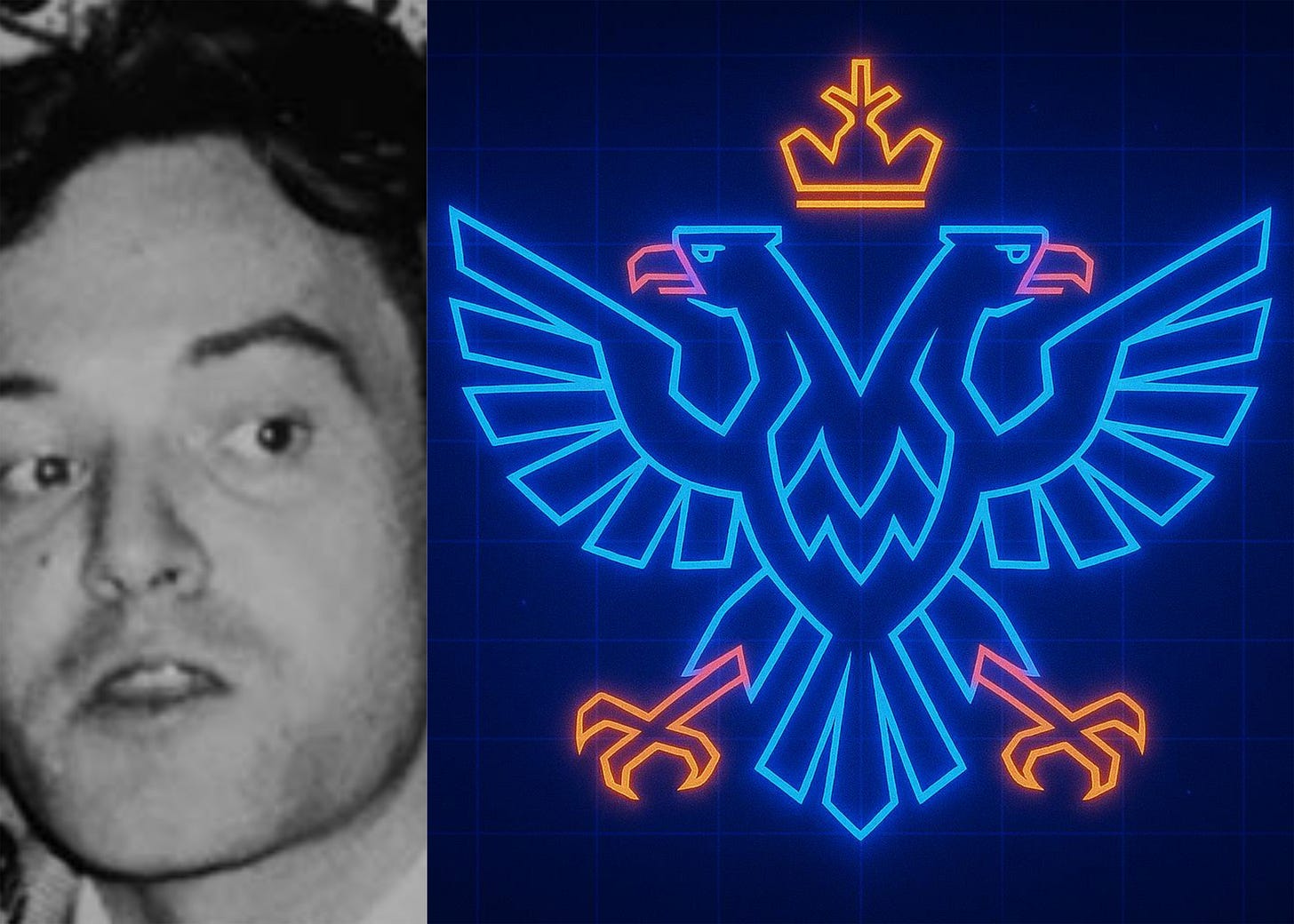Guillaume Faye and the Return of Empire
On Faye’s birthday, Europe dreams in neon and steel.
November 7 marks the birthday of Guillaume Faye (1949-2019), the visionary who foresaw a world reborn through struggle and synthesis, a prophet whose voice speaks ever louder in our time.
Faye foresaw the breaking of the modern enchantment. Rain fell through holographic halos above the city, washing neon light across old marble faces. He knew that the empire of comfort would one day crumble, that man would again hear the call of struggle and grandeur. In the distance, engines sighed beneath cathedral towers; somewhere, a monk adjusted a circuit and whispered a prayer to progress. Faye’s words struck like bronze trumpets through the fog of liberal boredom. Billboards glowed with forgotten symbols — iron eagles and solar crosses — flickering through the electric rain. He spoke of a Europe reborn in flame and faith, where ancient virtues would guide new machines, where engineers and knights would stand side by side. Streetlights hummed like organs in the drizzle; the scent of ozone mingled with incense from hidden shrines. Faye’s “archeofuturism” was both a prophecy and a banner: a union of the forge and the cathedral, of silicon and stone. Above the skyline, a cross of light pulsed once, twice, then vanished into the smoke: an omen for those still awake in the rain.
Across the world, Faye’s vision stirs. Civilizations awaken from the trance of sameness. Great spaces gather their power once more: Eurasia, India, China, the South. Each seeks its own law beneath the same sky. The spice of destiny thickens in the air. Ancient banners rise over shifting sands. Dreams of empire whisper through data and dust. The myth of one mankind gives way to the song of many destinies. Tribes of engineers and priests shape the dunes of power. Each world builds its faith in silence, waiting for the storm to call its name. The planet turns towards Faye’s horizon: a world of multipolar vigor where energy, memory, and faith bind civilizations tighter than treaties ever could. Prophets speak in code. Machines murmur forgotten tongues. Every empire becomes a living organism hungry for form. The age of talk yields to the age of will. In the shadow of awakening suns, the great houses of Earth prepare their thrones, bound by fire, guided by memory, fated to rule.
Out of this storm rises the outline of a new Holy Roman Empire, not a copy of the old yet bearing its soul. Steel wings open in radiant light. The angels of circuitry descend singing hymns of renewal. From Lisbon to Vladivostok, towers and turbines gleam under the same cross of destiny. Voices rise through the grids. Monks of data chant in firelit halls: each spark a verse from the Book of Tomorrow. Knights ride again, this time in steel and circuit, their banners carrying both the eagle and the atom. The air hums with blessing. Glowing armor reflects the dawn. Prophets of voltage proclaim the new covenant of creation. The West’s ruins glow with the light of factories and prayers. Candle smoke curls through ionized mist. Saints of silicon anoint the engines. Flame becomes faith, and faith becomes form. Faye’s Europe awakens: an empire of order amid flux, of faith amid fire, where the medieval spirit crowns the future with iron and laser grace.
This essay was originally published here.



Thanks for your great work!
We've restacked and shared this link on 'The Stacks'
https://askeptic.substack.com/p/the-stacks
And where are the women? I don't see many women in this triumphant parade. Without the women, it's not going to happen.